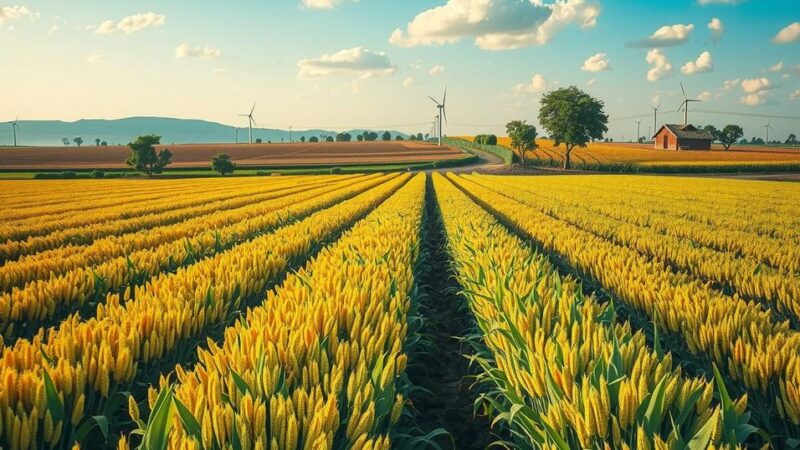The Panama Canal is essential for global shipping, but its operations are impacted by climate change and diminished rainfall, leading to reduced vessel traffic and increased queues. Although drier periods correspond with El Niño years, ongoing efforts aim to stabilize water levels through sustainable practices. Future forecasts remain cautiously optimistic, emphasizing the need for adaptive measures.
The Panama Canal, an 82-kilometer-long vital link between the Pacific Ocean and the Caribbean Sea, has been a crucial global shipping route since its inception in 1914. Recent discussions among U.S. politicians regarding the potential reclamation of ownership highlight its political significance. However, the operation of the canal faces increasing challenges stemming from climate change and decreased rainfall, raising concerns for its future viability.
The canal comprises a system of locks that facilitate the movement of various ships, including Neopanamax vessels. This process takes 8 to 10 hours, providing significant time and fuel savings compared to alternate routes. “Five percent of shipping globally traverses the Panama Canal,” stated Mark Russo from Everstream Analytics, emphasizing its critical role in global trade.
Gatun Lake, a key component of the canal, relies on consistent precipitation to remain navigable for large vessels. Although Panama typically receives over 2,000 millimeters of rainfall annually, certain years have seen significantly lower amounts. Steve Patton from the Smithsonian Tropical Research Institute noted that three of the last four decades have experienced unusually dry spells, impacting the canal’s functionality and trade.
Low water levels in Gatun Lake have necessitated reductions in the number of ships permitted through the canal. In 2024, only 11,240 vessels transited, a decrease from 14,080 in 2023, leading to longer wait times due to mandatory cargo reductions. Research is ongoing to assess the future impact of climate interactions and weather variability on shipping logistics.
Notably, the period of drought in the canal’s ecosystem aligns with El Niño years, which results in less rainfall. Michael McPhaden from NOAA remarked on the existing natural variability within the climate system, stating that there is no definitive evidence linking climate change to the frequency of these cycles as of now.
Climate change is, however, intensifying storm patterns, with McPhaden noting a 10% increase in storm intensity over recent years. Increased precipitation can create challenges as well; for instance, record rainfall in 2010 nearly shut down the canal due to rising water levels threatening an earthen dam. The situation underscores the necessity for balanced rainfall management.
Efforts like the Agua Salud Project aim to improve hydrological understanding and promote forest cover, which regulates water flow and assists in maintaining stable water levels in Gatun Lake. Patton emphasizes this connection, affirming that forest ecosystems play a crucial role in managing rainfall and thereby ensuring the canal’s operational capacity.
While recent water scarcity presents challenges, there is optimism for 2025, with current water levels in Gatun Lake at their highest in five years. Continued research and proactive management strategies are essential to mitigate the impacts of climate variability on the Panama Canal’s operations as global shipping demands persist.
In summary, the Panama Canal remains a pivotal channel for international trade, yet its operations are increasingly jeopardized by climate-related fluctuations. Significant drops in rainfall have prompted reductions in vessel transit and prolonged wait times, raising concerns about future accessibility. Ongoing research initiatives provide hope for managing these challenges effectively, but the canal’s long-term sustainability will require adaptive strategies to cope with changing climatic conditions.
Original Source: eos.org






